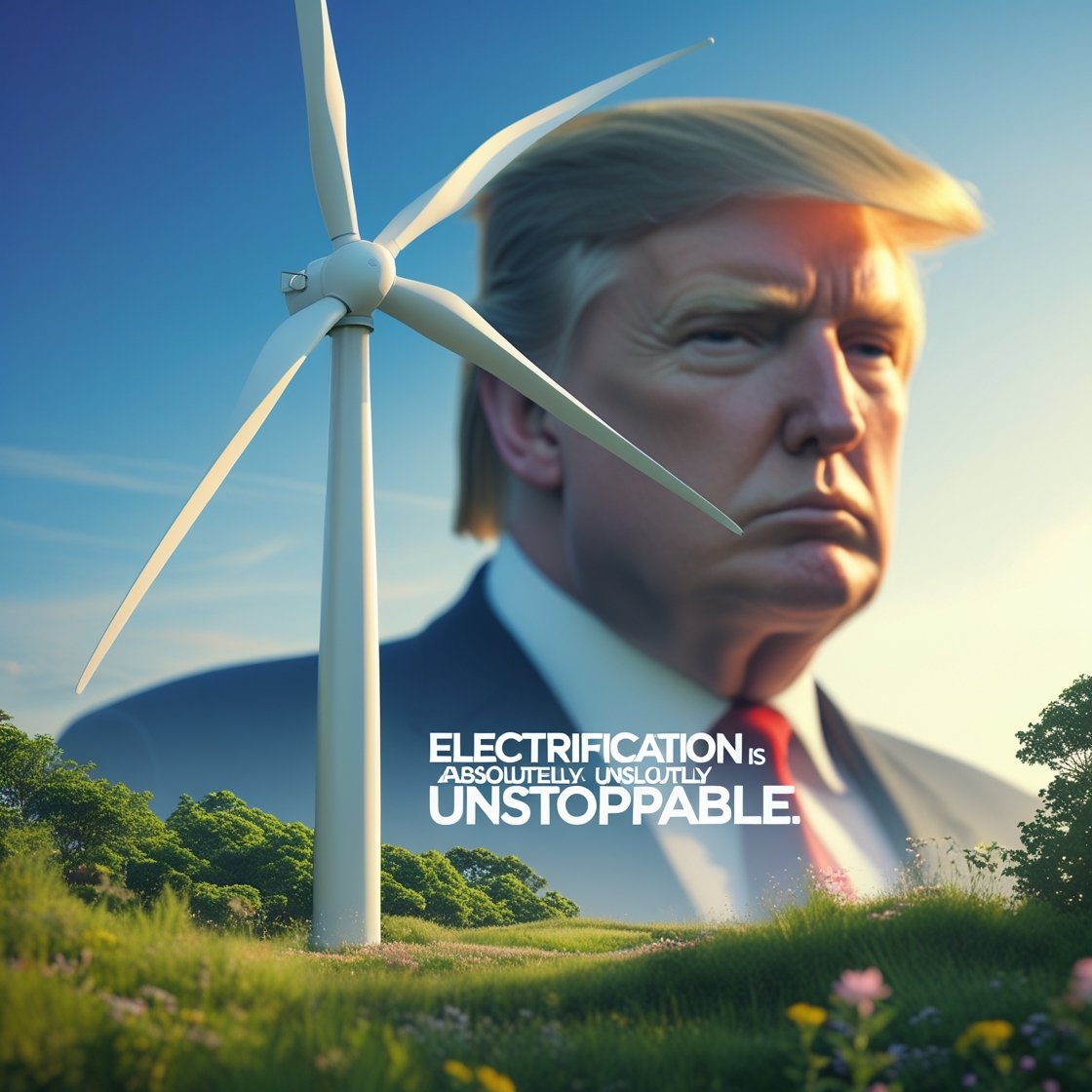The shift to renewable energy is no longer a whisper in the halls of environmental advocacy—it’s a booming industry reshaping our future. Despite former U.S. President Donald Trump’s efforts to stifle wind energy through policies and rhetoric, renewable energy giants and stakeholders have pushed forward with record-breaking investments, innovation, and progress. The message is clear: the electrification of energy is inevitable and unstoppable.
This blog dives into how renewable energy companies have responded to challenges, the persistent growth of the sector, and why wind energy, among other renewables, continues to thrive as the world pivots toward sustainability.
The Backlash Against Wind Energy Under Trump
Donald Trump’s administration frequently targeted wind energy with a mix of skepticism and criticism. From unfounded claims about health risks to undermining subsidies and incentives for renewable projects, the administration created a seemingly hostile environment for the wind energy industry. Trump often emphasized his preference for traditional energy sources like coal and fossil fuels, which he argued were critical to the U.S. economy.
But even amid political headwinds, the renewable energy sector held its ground. The global momentum for clean energy investments, increasing environmental awareness, and the undeniable drop in renewable energy costs made it clear that renewables weren’t just an alternative to traditional energy—they were the future.
Policy Challenges and Industry Determination
Trump’s rollback of federal support for clean energy projects was a notable attempt to derail the progress of renewables. Subsidy programs, once robust, faced reductions, while regulatory hurdles for wind farm development intensified. State-level support became the lifeline for many projects, with states like California, Texas, and New York bolstering efforts to expand their renewable potential.
Despite these obstacles, companies like Vestas, Siemens Gamesa, and Ørsted doubled down on innovation and resilience. Global renewable energy investment hit record highs year after year, showcasing that industry leaders were focused far beyond short-term political cycles.
The Unstoppable Momentum of Wind and Renewables
There’s a reason executives in the renewable energy industry now declare electrification to be “absolutely unstoppable.” The numbers tell the story.
Key Growth Metrics in Renewable Energy
- Record Installations: Wind capacity in the United States grew to over 140 gigawatts in 2023, enough to power over 50 million homes, according to the U.S. Department of Energy.
- Cost Competitiveness: The cost of wind energy plummeted by more than 60% over the last decade, making it cheaper than many fossil fuel options.
- Job Creation: The wind energy sector employs over 116,000 Americans, with predictions of significant job growth in coming years.
The wind energy sector—and renewables at large—have proven to be resilient, adaptable, and immensely profitable. The growing demand for clean energy from consumers and corporations alike creates an unrelenting push forward that even political opposition can’t stall.
Private Sector Leadership
Forward-thinking companies across industries have long embraced renewable energy as part of their decarbonization strategies. Multinational corporations like Google, Amazon, and Apple have adopted wind and solar energy for their operations, sending a powerful signal to both markets and governments.
Additionally, investment from financial institutions continues to pour into renewable projects. Firms like BlackRock and Goldman Sachs are aligning their investment strategies with ESG (Environmental, Social, and Governance) principles, recognizing that the future of energy is renewable.
Why Electrification Is Inevitable
The gravitational pull toward electrification and renewables isn’t just driven by business or politics—it’s a matter of necessity to combat climate change and secure energy independence.
Environmental Imperatives
The climate crisis demands urgent reductions in greenhouse gas emissions. Renewables, particularly wind and solar, provide scalable solutions that can drastically cut emissions over time. By focusing on electrification, countries can decrease their reliance on fossil fuels and transition toward sustainable energy systems.
Consumer and Corporate Demand
Today’s consumers and businesses prioritize sustainability as a core value. According to Deloitte’s 2023 Global Consumer Sustainability Survey, over 50% of respondents actively seek out sustainable products and services, including energy. This demand pressures both private companies and public utilities to shift away from traditional energy in favor of renewable options.
Technological Advancements
Breakthroughs in technology continuously shape the landscape of renewable energy. Advances in wind turbine design, battery storage, and grid infrastructure have made it possible to integrate renewable energy into the larger power grid seamlessly. These innovations enhance efficiency and enable renewables to compete aggressively with traditional energy sources.
Wind Energy’s Global Stage
Efforts to keep wind energy from reaching its potential in the U.S. have had minimal global impact. Across the world, countries are racing to become leaders in wind energy innovation and implementation.
European Leadership
Europe has long been a trailblazer in wind energy. Countries like Denmark and Germany, with advanced offshore wind developments, continue to set production benchmarks. The European Union’s Green Deal further underscores the critical role of renewable energy in the continent’s commitment to being climate-neutral by 2050.
The Rising Power of Asia
China leads the way in wind installations, with over one-third of the global capacity as of 2023. India and other Asian nations are also increasing investments in renewables, recognizing their value in long-term energy security and pollution control.
The Global Spotlight on Offshore Wind
Offshore wind is emerging as the next frontier in renewable energy. Projects like the United Kingdom’s Hornsea Project One and those currently under development in the U.S. indicate a bright path forward for harnessing wind power at scale.
Building a Sustainable Energy Future
While the Trump administration may have slowed some federal momentum for wind energy, it failed to reverse the tide. Instead, the renewable energy sector adapted, thriving on innovation, state-level initiatives, and the undeniable demand for cleaner energy solutions. The electrification of energy is not just a passing trend—it’s an inescapable transformation driving the world toward a more sustainable future.
If you’re an individual, business, or policymaker contemplating your role in the renewable energy revolution, now is the time to act. Support clean energy initiatives, push for policy changes, and invest in technologies that will power the world in decades to come.

